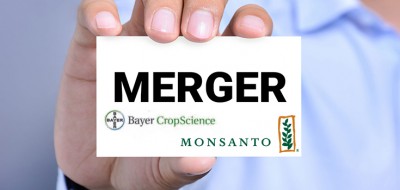Bayer and Monsanto: A Marriage Made in Hell https://www.google.com/search?q=pic+of+satan&source=lnms&tbm=isch&sa=X&ved=0ahUKEwjbrrLy4vDMAhWIMj4KHdGvAqEQ_AUIBygB&biw=1920&bih=979#imgrc=dVHwm3A8XP2oCM%3A
https://www.google.com/search?q=pic+of+satan&source=lnms&tbm=isch&sa=X&ved=0ahUKEwjbrrLy4vDMAhWIMj4KHdGvAqEQ_AUIBygB&biw=1920&bih=979#imgrc=dVHwm3A8XP2oCM%3A

In a world infected
with a plethora of immoral multinational corporations, it is hard to
think of two corporations which have more nefarious histories than Bayer
AG and Monsanto. Considering this, it is a harrowing prospect that the
two corporations could potentially strike a deal in the near future.
As Bloomberg reported
earlier this month, Bayer AG – the German pharmaceutical and chemical
corporation – is reportedly considering a bid for the agrochemical and
biotechnology corporation, Monsanto. This comes two months after
Monsanto showed some interest in acquiring Bayer Crop Sciences, a branch of Bayer AG.
Founded in 1863, Bayer may
be familiar to many readers as the first company to widely sell and
trademark Aspirin in the late nineteenth century. But there is a far
more sinister history to this company that is often omitted.
The Inception of Chemical Warfare

Even as far back as the
First World War, Bayer was playing a major role in the development of
Germany’s chemical weapons apparatus. Along with other German chemical
giants at the time, Bayer was
a key player in producing and supplying the German army with chemical
weapons during WWI (it should be noted that other powers were developing
and deploying chemical weapons during the Great War, not just Germany).
Bayer and the Nazi War Machine
Fast-forward a decade or
so, and Bayer was playing an integral part in amalgamating numerous
chemical companies into one. The merger resulted in the creation of the
most infamous chemical company in modern history – I.G. Farben. As the
late Anthony C. Sutton – a former Economics Professor at California
State University and Research Fellow at Stanford University’s Hoover
Institution – wrote in his book, Wall Street and the Rise of Hitler:
“The Farben cartel dated
from 1925, when organizing genius Hermann Schmitz (with Wall Street
financial assistance) created the super-giant chemical enterprise out of
six already giant German chemical companies – Badische Anilin, Bayer,
Agfa, Hoechst, Weiler-ter-Meer and Griesheim-Elektron. There companies
were merged to become I.G. Farben. Twenty years later the same Hermann
Schmitz was put on trial at Nuremburg for war crimes committed by the
I.G. cartel. Other I.G. Farben directors were placed on trial but the
American affiliates of I.G. Farben and the American directors of I.G.
itself were quietly forgotten; the truth was buried in the archives…
Without the capital supplied by Wall Street, there would have been no
I.G. Farben in the first place and almost certainly no Adolf Hitler and
World War II.”
In more modern times, a division of Bayer was accused of ‘knowingly’ selling HIV-contaminated blood products to haemophiliacs, and has paid millions in damages in legal settlements.
Brothers in Death
During the Vietnam War,
Monsanto was contracted to produce and supply the US government with a
malevolent chemical for military application. Along with other chemical
corporations at the time such as Dow Chemical, Monsanto produced the
military herbicide Agent Orange which
contained high quantities of the deadly chemical Dioxin. Between 1961
and 1971, the US Army sprayed between 50 and 80 million litres of Agent
Orange across Vietnamese jungles, forests and strategically advantageous
positions.
It was deployed in order to destroy forests and fertile lands which provided cover and food for the opposing troops. The fallout was devastating, with Vietnam estimating that 400,000 people died or were maimed due to Agent Orange,
as well as 500,000 children born with birth defects and up to two
million people suffered from cancer and other diseases. Millions of US
veterans were also exposed and many have developed similar illnesses.
The consequences are still felt today, and will continue to be felt for
decades to come; with cancer rates, birth defects and other diseases still causing devastation to the victims and their families.
And today, Monsanto is still involved in producing chemical poison.
Last year, the World Health Organisations (WHO) cancer agency – the
International Agency for Research on Cancer (IARC) – conducted a study
on glyphosate, the main ingredient in the most widely used weedkiller in
the world, Monsanto’s Roundup – which is heavily sprayed on GMO crops.
The IARC study revealed that glyphosate was “classified as probablycarcinogenic to humans”.
Given the history of these
corporations and the atrocities they have been complicit in, the last
sector they should be involved in is the agricultural industry.
Steven MacMillan is an independent writer, researcher, geopolitical analyst and editor of The Analyst Report, especially for the online magazine “New Eastern Outlook”.
The original source of this article is New Eastern Outlook
Copyright © Steven MacMillan, New Eastern Outlook, 2016



No comments:
Post a Comment